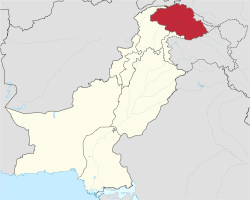The Kargil-Skardu Route: Implications Of Its Opening – Analysis
By IPCS
By Zainab Akhter
Gilgit-Baltistan (GB) is strategically important for Pakistan both in terms of water security and because of the Karakoram Highway, which links Gwadar with China. Consolidating a road that intercepts the Karakoram highway is critically important in times of war for rapidly severing this link that has been deeply detrimental to India’s security. Moreover such a road can provide rapid access to Central Asia should either of two extremities eventuate – the collapse of Pakistan, or a rapid warming of India-Pakistan ties. This article, however, attempts to explore the implications of opening and consolidating the Kargil – Skardu road as a step towards the opening of GB and its pacification, which has been in turmoil for years.

In recent years, the Sectarian violence in GB has, in fact, intensified leading to an attempted exodus to Kharmang in Pakistan, compounded by a human rights problem. Two issues are central to the problem – divided families and a depressed local economy. That cross-border routes alleviate emotional alienation as a result of families divided by borders has been proven by the opening of the Uri-Muzaffarabad and Poonch-Rawlkote routes for Kashmir and Jammu respectively. Now attention needs to be focussed on Ladakh – especially the Shia Baltis of the Kargil and Skardu regions.
Haji Abdul Hamid, a native of Zanskar symbolises this. In 1948 the retreating Pakistan Army, which had occupied the Zanskar heights took many locals and settled them in Skardu. As a result of tight travel restrictions they can only meet in Saudi Arabia or Iran during pilgrimages. Since the Baltis do not identify with the Kashmiri culture, the alleviation of Balti concerns significantly reduces the scope of what is referred to as the “Kashmir Issues” taking further wind away from the sails of this monolith construction.
Historically, the all weather Kargil-Skardu route was a jugular of intra-regional trade on which the local economy was heavily dependent. The events following partition, specifically the India-Pakistan war of 1948 resulted in the closure of this historic route isolating Baltistan from its natural linkages to the outside. The road from Skardu to Kargil via Srinagar is almost a stretch of 1,700Kms while, at the same time, Skardu is a 173kms or a five to six hours drive from Kargil. The entire route is, at present, suitable for four wheeled vehicles and may need some widening for a small stretch of about half a kilometre near the Line of Control (LoC). The utility of the Kargil-Skardu road also lies in its durability in winter months. At present there is only one pass Zoji-La (NH1) which connects the Ladakh region on the Indian side with the rest of the World. But this lifeline is cut off for more than six months in winters due to heavy snowfall and people spend their life in isolation specially in Kargil (Leh has an aerial connectivity from Srinagar, Jammu and Delhi).
This route can become an important trade and tourism link for the people of Ladakh. Several studies indicate the existence of a large smuggling based black market in the region. Formalizing this trade carries the potential of increasing governmental income, which can strengthen the local economy by providing impetus for further growth independent of what happens in the Kashmir valley. As trade between India and Pakistan are carried out in a third country, significant revenues are lost, profit margins are reduced, and costs go up. Formalization of direct trade by eliminating these three undesirable aspects brings an immediate improvement to the quality of life in the region.
GB and Kargil have extensive tourism potential, especially adventure tourism – trekking, mountain biking, river rafting and a host of other such activities. In addition, there are number of routes suitable for high altitude Jeep Safaris. The exploitation of these depends on open circuits with several contingencies and shorter access routes, which are cut off by the border as of now. Moreover, given that the link to Kashmir is snowed in for half the year, this route delinks what is otherwise an all weather tourist destination to the climactic undesirables of weather patterns in Kashmir. As a result, the seasonal unemployment that Kashmir suffers from is unwittingly imposed on the Kargil region, which need not be the case.
Leaders of the Hill Development Council in Kargil have demanded a Greater Ladakh which would include Gilgit, Skardu and Baltistan precisely because the local economic development is being held hostage to events in Kashmir even though the underlying causes are completely divorced from the more contentious issues there. This card if played right can be the first step towards the pacification if not the solution of the Kashmir problem.
Zainab Akhter
Research Intern, IPCS
email: [email protected]
